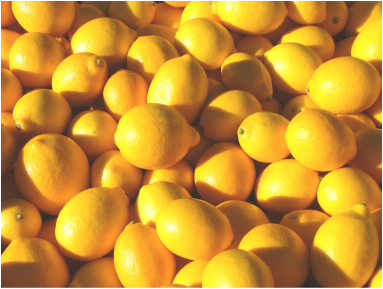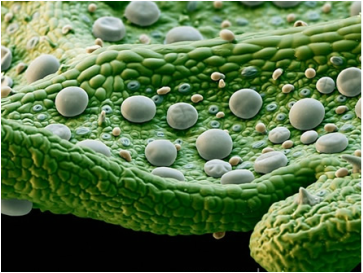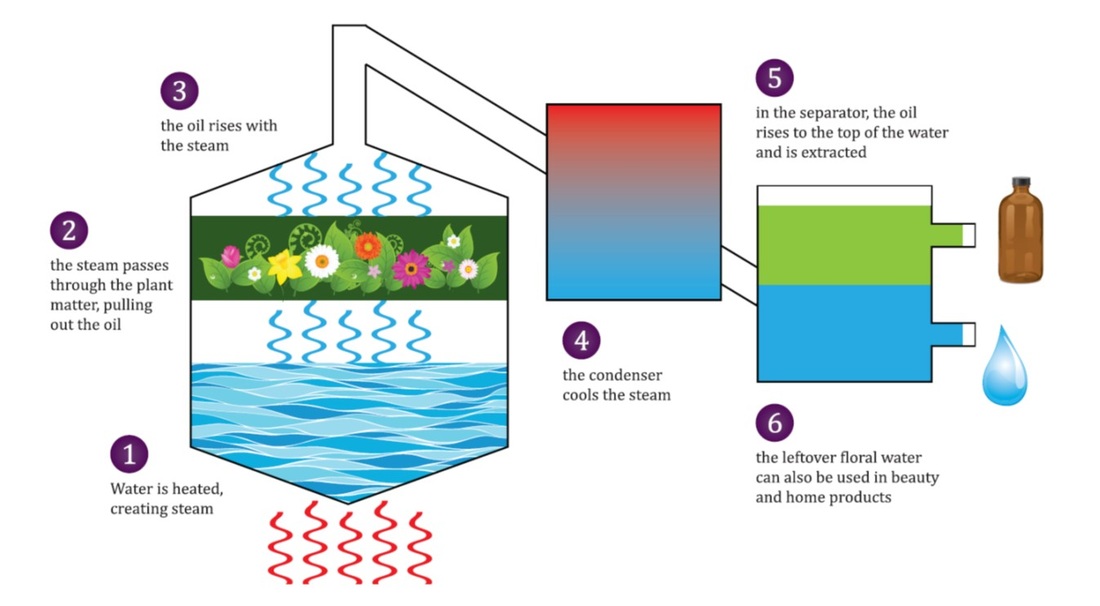|
|
Essential oil is the life-giving, aromatic liquid found inside certain plants, shrubs, or trees. In the plant kingdom there are more than 250,000 species, but only about 450 species produce usable essential oils. The essential oil can be found in the plant's leaf, flower, fruit, root, seed, or bark. Think about peeling 75 lemons, taking the rinds and compressing them. If you had a good cold pressing system, you could extract 15 ml (one tablespoon) of lemon essential oil. Note that this is not the "juice" of the lemon which comes from the fruit, but is the liquid which comes from the rind.
Essential oils are truly "essential" to the plant. They have been called “the life blood of a plant.” They circulate through plant tissues and pass through cell walls, carrying nutrition into cells and carrying waste products out. They transport the chemical components needed to protect, feed, and repair the cells of the plant. Each oil contains complex combinations of chemicals which act as antimicrobial, antifungal, and antibacterial agents against a wide range of organisms that may threaten the survival of the plants. Lavender oil alone contains about 200 different chemical constituents! The plant's essential oil kills viruses, bacteria, parasites, and fungi that could harm the plant. Some oils repel insects and pests, but others are attractive for pollination purposes or to summon a specific animal. A perfect example are tomatoes, which always emit a normal aromatic scent into the air, but will change the constitutes of their essential oil when under attack by horn worms to attract a specific type of wasp which love to feed on horn worms! Essential oils are very concentrated. A single drop of peppermint oil is equivalent to 28 cups of peppermint tea. It takes a pound of raw peppermint leaves to make 15 ml (one tablespoon or 3/100 of a pound) of peppermint oil. It requires 5 pounds of lavender (roughly 27 square feet) to make 15 ml of lavender oil, and 30,000 roses are needed to produce 15 ml of rose oil. In the case of jasmine, the flowers must be picked by hand before the sun becomes hot on the very first day they open. It requires 120,000 of these flowers to make 15 ml of jasmine oil, so jasmine along with rose are two of the most expensive oils in the world today. To maintain their therapeutic value, essential oils have to be carefully extracted from the plants. Cold expression is used for citrus oils, such as grapefruit, lemon, and orange. The most common method, though, is steam distillation shown to the left. Distillation is a fine art -- the plant has to be heated at specific temperatures, pressures, and time to best separate the oil from the plant structure without fracturing its chemical constituents. Simply extracting the oil from a plant does not itself guarantee that the therapeutic properties of the plant have been harnessed. The constituents of any given essential oil will be determined by:
NEXT --> Essential Oils 101: Oils Throughout History References Steward, David, Ph.D., D.N.M, The Chemistry of Essential Oils Made Simple Apter, Joan, CMT. “Essential Oils Enhance Massage Therapy”, Professional Bodyworkers Journal. Spring 1998: pp. 30-34. Life Science Publishing. Essential Oils Desk Reference. USA: LifeScience Publishing, 2014. pp. 1-13, 19, 22-23, 250-251. Higley, Alan and Connie. Reference Guide for Essential Oils, 2014. Price, Len & Shirley. Aromatherapy for Health Professionals. London: Churchhill Livingstone, 1999. pp. 9, 150. Schnaubelt, Kurt. Medical Aromatherapy. California: Frog, Ltd., 1999. pp. 7, 91-92, 196, 220. Wilson, Roberta. Aromatherapy for Vibrant Health & Beauty: A Practical A-to-Z Reference to Aromatherapy Treatments for Health, Skin, and Hair Problems. Avery Publishing Co., 1995. p. 16. Worwood, Valerie. The Complete Book of Essential Oils and Aromatherapy. 1991 Young, D. Gary, N.D. Essential Oils Integrative Medical Guide: Building Immunity, Increasing Longeverity, and Enhancing Mental Performance with Therapeutic-Grade Essential Oils, 2003. |
AnointingTouch.




